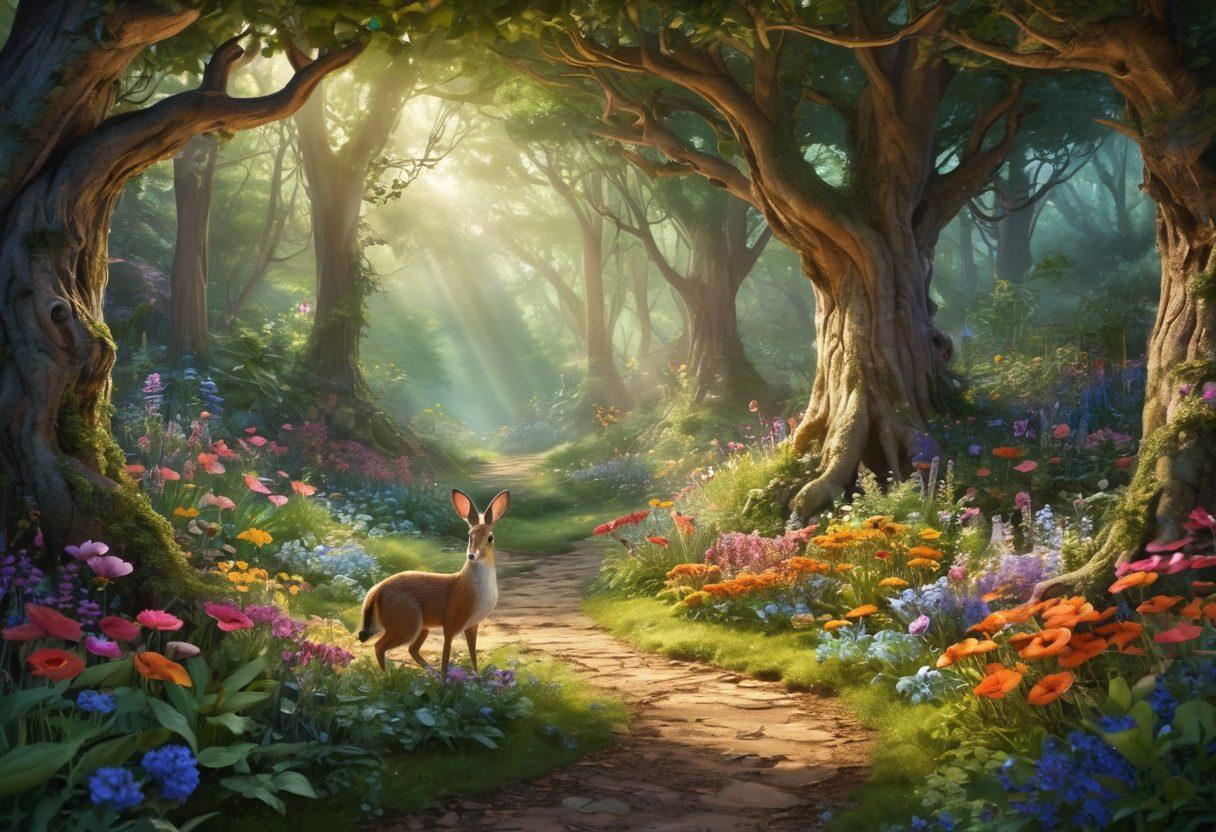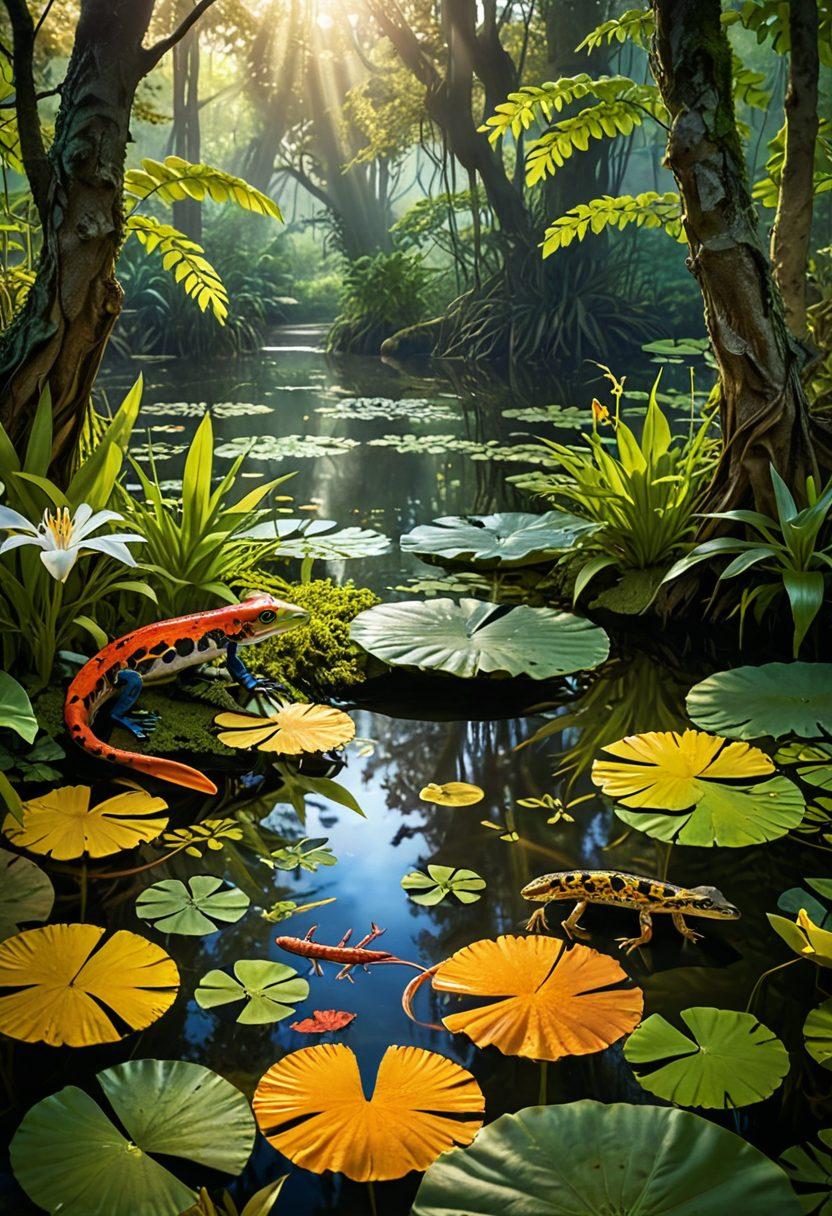Understanding the Secret Lives of Salamanders: An Insight into Their Habitat and Conservation Needs
When we think of nature, a kaleidoscope of majestic creatures comes to mind — soaring eagles, galloping deer, and roaring lions. But did you know that beneath the shadows of tall trees, in the cool dampness of woodlands, a quietly pivotal organism is often overlooked? Meet the salamander, affectionately nicknamed 'sally' by enthusiasts, these remarkable amphibians play a central role in their ecosystems while also highlighting the urgent need for conservation efforts. From the depths of swamps to the edges of ponds, they exemplify the delicate balance of our natural world and serve as indicators of environmental health.
Salamanders represent a vital facet of biodiversity, a cornerstone species that links various levels of the food chain. Their presence is a sign of a well-functioning ecosystem since they consume a variety of insects and worms and, in turn, provide sustenance for larger wildlife. Imagine walking through a vibrant forest in early spring; the air buzzes with life, and you spot a colorful spotted salamander slithering through the underbrush. Have you ever wondered how these diminutive creatures navigate their environment? Through their fascinating animal behavior and mating habits, salamanders exhibit an impressive array of adaptations that underscore the importance of habitat preservation for their survival and that of other fauna.
In the realm of amphibians, salamanders face unique challenges, and some species are teetering on the brink of extinction. With their permeable skins, they are particularly sensitive to changes in their environment. Factors such as habitat destruction, pollution, and climate change directly threaten their populations. Could we be losing these incredible creatures before we even get to understand them fully? As we delve deeper into the needs for conservation, it becomes clear we must advocate for protective measures that cover both aquatic and terrestrial habitats as well as implementing ethical animal rights practices.
Many conservation initiatives focus on preserving wetlands and natural habitats that are home to various endangered species, including salamanders. Conservationists are tirelessly working towards creating safe havens in the form of protected swamps, ponds, and forests. But here’s a question for you: how can we, as everyday citizens, contribute to these efforts? Engaging in local clean-up projects, supporting organizations dedicated to wildlife conservation, or even fostering biodiversity in our own backyards can create positive ripples in the ecosystems that these amphibians rely on.
As we explore the secret lives of salamanders, we uncover a rich narrative layered with stories of resilience, struggle, and interconnectedness in the natural world. Imagine standing by a shimmering pond filled with life and knowing that every creature there, no matter how small, plays a crucial role in your environment's larger story. By embracing the charm of creatures like sally, we take a step toward fostering a deeper appreciation for wildlife and all that makes our planet thrive. Through biological studies and a commitment to conservation, we have the power to safeguard the future of these enchanting species and continue the pursuit of balance in our ecosystems.
Exploring the Lives of Sally: Habitat Mysteries and Behavioral Insights
Have you ever wondered what secrets lie in the quiet corners of our wild spaces? Meet Sally, an unassuming yet fascinating salamander, a creature that holds mysteries of the animal kingdom in her slender form. Salamanders are amphibians that thrive in both terrestrial and aquatic environments, acting as a crucial piece of the puzzle in our ecosystems. As we embark on this journey to explore the lives of Sally and her kin, we will uncover the habitats that nurture them, their behavioral quirks, and the urgent need for conservation efforts to protect these enchanting creatures. What makes Sally’s life so intriguing? Let’s dive in!
Salamanders, like Sally, often call moist habitats home, such as wetlands, ponds, and swamps. These delicate ecosystems are teeming with biodiversity, providing shelter and sustenance for countless species. Imagine strolling through a lush forest after a rain shower; the air thick with humidity, the ground soft and squishy underfoot. In these enchanting places, Sally might be feasting on insects or hiding beneath a leaf, camouflaged against predators. But have you ever considered how these habitats affect her behaviors, such as her mating rituals? Wouldn’t it be fascinating to witness a courtship dance of these amphibians?
When it comes to the lives of these remarkable creatures, each salamander species has unique mating habits. From vivid courtship displays, including intricate movements and secretions, to the more reserved approaches of certain species, understanding these behaviors can reveal much about the ecology of Sally’s world. Observing how these amphibians interact can be a biological study in itself, highlighting their roles in maintaining healthy ecosystems and the ways they adapt to environmental changes. Sally, our charming protagonist, reminds us of the dance of life occurring right under our noses. What stories could she tell us about her comrades?
However, not everything is ideal in Sally's world. The threats of habitat destruction, pollution, and climate change are looming over many amphibian species, making conservation efforts more crucial than ever. As our environments rapidly change, so do the lives of creatures like Sally. When we consider animal rights and the importance of habitat preservation, we must advocate for the wetlands and swamps that these wildlife call home. Every small act of supporting conservation initiatives or spreading awareness can contribute to safeguarding these habitats for Sally and her friends. Could you imagine a world where Sally’s vibrant presence is just a memory?
Ultimately, our fascination with Sally goes beyond her captivating appearance; it extends to a broader appreciation for the delicate balance of life within our natural world. As we reflect on her existence and the specific needs of her species, we are reminded that every creature, big or small, plays a vital role in our ecosystem. As stewards of the environment, we can empower ourselves to take action - whether it’s participating in community clean-ups or educating ourselves about the species that inhabit our backyards. Let us respect and protect the lives of these incredible amphibians by ensuring that Sally and her kin continue to thrive in the wild. How will you contribute to the conservation of our planet’s biodiversity?
From Swamps to Ponds: Understanding Salamanders' Unique Habitats and Survival Challenges
Imagine walking through a damp forest after a fresh rain, the air thick with moisture and the promise of life. If you look closely, you might catch a glimpse of a tiny, vibrant creature creeping along the forest floor— a salamander. These fascinating amphibians, often overshadowed by their more famous reptile relatives, are a critical link in our ecosystem. From swamps to ponds, salamanders' unique habitats and survival challenges reveal the intricate web of life they weave. Understanding these challenges is essential, not just for salamanders like our friend Sally, but for the entire biodiversity that thrives in our natural world.
Salamanders are extraordinary creatures, beautifully adapted to their diverse environments, be it the humid wetlands or the cool, shaded forests. Various species have adapted to life both in aquatic and terrestrial habitats, showcasing an impressive range of biological study. For instance, while some species lay their eggs in ponds, others prefer the cover of moist leaf litter in swamps. This adaptability is what makes them such captivating subjects for herpetologists and wildlife enthusiasts alike. Have you ever considered how the unique mating habits of these animals play a role in ensuring their survival?
Unfortunately, as with many species, the habitat of salamanders is under threat. Urbanization, climate change, and pollution have drastically altered their ecosystems, leading to dwindling populations. In fact, many species of salamanders are now categorized as endangered. It begs the question—how can we contribute to habitat preservation to ensure these remarkable fauna thrive? As stewards of the environment, we have a responsibility to protect these vulnerable creatures and advocate for conservation efforts that help maintain their natural habitats.
One way to support salamanders and their ecosystem is by becoming actively involved in wildlife conservation initiatives. Whether it's participating in local clean-up efforts or advocating for policies that protect wetlands and ponds, every action counts. Additionally, educating ourselves and others about the importance of biodiversity and animal rights is crucial. By sharing stories of Sally and her kin, we can inspire a love for these creatures that foster a desire to protect their environments, and in turn, improve the overall health of our ecosystems.
As we continue to explore the natural world, let’s remember that every salamander we encounter represents a piece of our planet's intricate puzzle. Their survival challenges mirror the broader issues facing wildlife today. So, the next time you wander near a swamp or pond, pause for a moment and reflect on the vital role these amphibians play, not just in their habitats, but in our lives. Together, we can ensure that Sally and her fellow salamanders continue to thrive in the wild, a testament to our shared commitment to the beauty and complexity of life.


